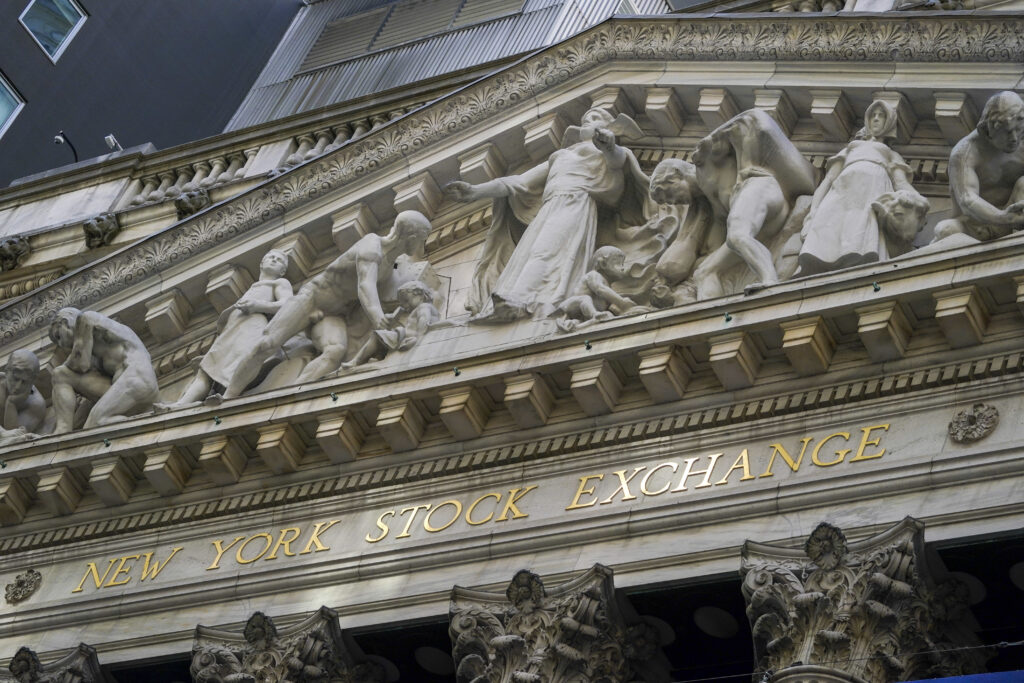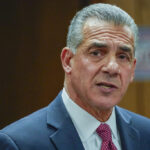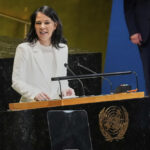The Dow and the S&P 500 rose on Tuesday after more upbeat earnings reports from some of the country’s top lenders boosted the banking index to its highest since a crisis rattled the sector earlier this year. Bank of America posted a 20% surge in second-quarter profit, while Morgan Stanley beat analysts’ expectations for quarterly results, sending their shares up between 4% and 6%. The Associated Press has the story:
Big financial companies lead Wall Street higher
Newslooks- NEW YORK (AP)
Stocks of several financial titans are leading Wall Street higher Tuesday following some mixed reports on the economy.
The S&P 500 was 0.5% higher in afternoon trading, with the majority of the stocks in the index on the upswing. The Dow Jones Industrial Average was up 346 points, or 1%, at 34,931, as of 12:34 p.m. Eastern time, and the Nasdaq composite was 0.4% higher.
Charles Schwab jumped 12.6% after reporting stronger profit and revenue for the spring than analysts expected. Several other big financial companies also reported better results than forecast, including Bank of America, Morgan Stanley and Bank of New York Mellon.
On the losing end was Masimo, which makes medical equipment and also runs a consumer audio business home to the Bowers & Wilkins and Denon brands. It tumbled 21.3% after it said it expects to report weaker-than-expected revenue for the spring in part because of fewer patients at U.S. hospitals. It also said a decline in demand for audio products has moved up from the lower end to the premium and luxury end.
Wall Street’s reporting season is just ramping up as companies tell investors how much profit they earned from April through June. Banks have been at the front of the parade, which JPMorgan Chase helped begin last week with a better-than-expected report. Banks can offer a unique window into the economy’s strength because of how many different types of customers they serve.
“We continue to see a healthy U.S. economy that is growing at a slower pace, with a resilient job market,” Bank of America CEO Brian Moynihan said while reporting results for the nation’s second-largest bank. Its stock rose 4.7%.
PNC Financial Services Group, meanwhile, said its baseline outlook is for a mild recession to start in late 2023 or early 2024, lasting into the middle of next year. It also reported stronger profit for the latest quarter than expected, though its revenue fell short of forecasts. Its stock rose 1.5%.
Such statements get at the biggest question setting Wall Street’s agenda: whether the economy can avoid a long-predicted recession and outlast high inflation, which has forced the Federal Reserve to crank up interest rates.
Reports on the economy Tuesday came in mixed. One said that sales at U.S. retailers grew by less last month than economists expected, marking a slowdown from May’s growth. That could indicate a tiring consumer, whose strong spending has so far been one of the main bulwarks keeping the economy out of a recession.
But economists said underlying sales trends, which exclude automobiles, gasoline and other items, were stronger than expected in June.
A separate report said U.S. industrial production contracted again last month. That was a surprise to economists, who had been forecasting a flat reading.
Altogether the data seemed to reinforce the heavy bet among traders that the Federal Reserve will raise its federal funds rate at its meeting next week, but that could be the final hike of this cycle.
High rates undercut inflation by bluntly slowing the entire economy and dragging downward on prices for stocks and other investments.
If the Fed does follows through on expectations next week and raises the federal funds rate to a range of 5.25% to 5.50%, it will be at its highest level since 2001. That would be up from its record low of nearly zero early last year.
But inflation has been slowing over the last year, and hopes are high on Wall Street that it will continue cooling enough to get the Fed to stop raising rates and perhaps begin cutting them next year.
Economic data broadly has been on the upswing recently, and Goldman Sachs economist Spencer Hill sees it helping growth remain “near the top end of the range we view as the sweet spot for rebalancing the labor market without a recession.”
Treasury yields bounced around following Tuesday’s economic reports but remained below where they were a day before.
The yield on the 10-year Treasury fell to 3.77% from 3.81% late Monday. It helps set rates for mortgages and other important loans.
The two-year Treasury yield, which moves more on expectations for the Fed, held steady at 4.75%.
In markets abroad, stocks rose modestly in Europe and were mixed in Asia. Hong Kong’s Hang Seng tumbled 2.1%, while Japan’s Nikkei 225 added 0.3%.







